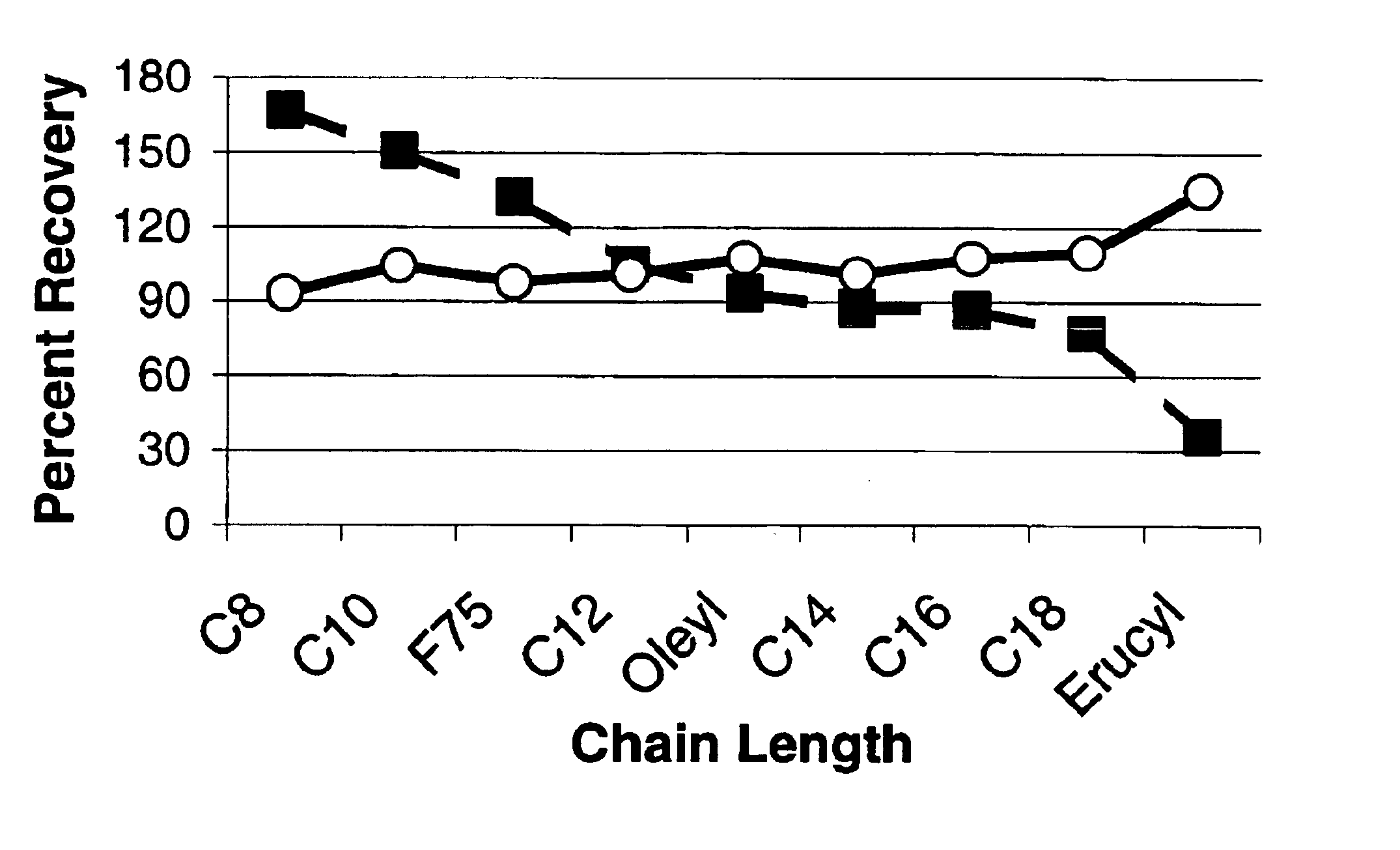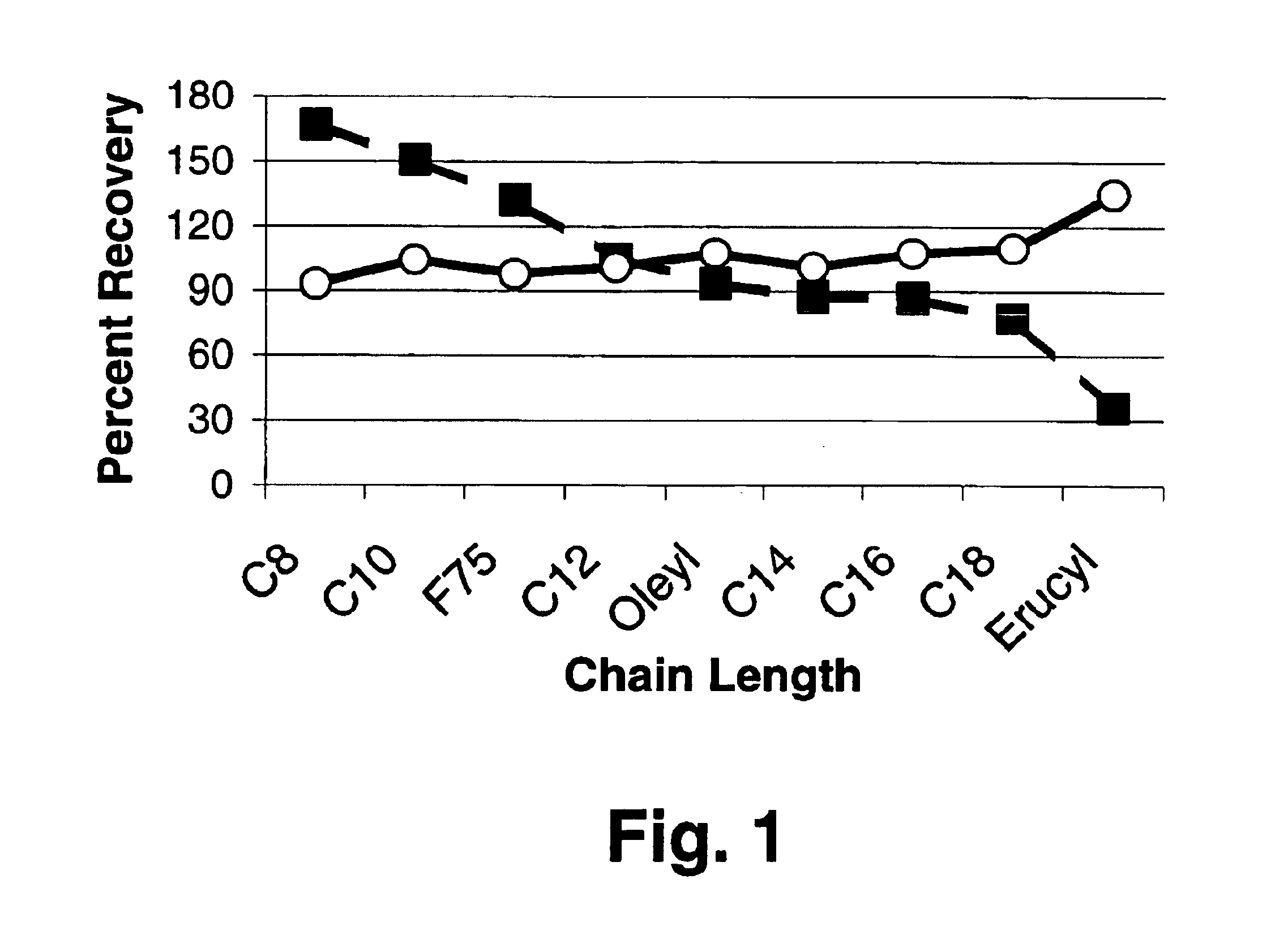Fracturing fluid and method of use
a fracturing fluid and fluid technology, applied in fluid removal, chemistry apparatus and processes, borehole/well accessories, etc., can solve the problems of amine oxides have not been used to improve the properties of fracturing fluid, and the procedure is greatly overly simplified, so as to improve the production of wells and reduce the loss of fracturing fluid. , the effect of rapid cleanup
- Summary
- Abstract
- Description
- Claims
- Application Information
AI Technical Summary
Benefits of technology
Problems solved by technology
Method used
Image
Examples
example 1-9
[0017]Various amine oxides, and one commercial fluorocarbon surfactant (identified as F75N; not an example of the invention), were tested in certain fluids in core flow tests using the procedures set forth below. The amine oxides each corresponded to Formula I:
in which R2 and R3 are each methyl, and R1 is n-octyl, n-decyl, n-dodecyl, n-tetradecyl, n-hexadecyl, oleyl, or erucyl (the later two groups are alkenyl groups of 18 and 22 carbon atoms, respectively). The data are plotted in FIG. 1 where the open circles correspond to the flow recovery with a brine flow, and the solid squares to the flow recovery with nitrogen. The detailed core flow procedures are given below. The data show that the amine oxides provide a percent recovery that differs with the chain length of the aliphatic R1 group on the amine oxide. Surprisingly, those amine oxides in which the aliphatic R1 group had 8 or 10 carbon atoms performed better (i.e., had a higher percent recovery) than the commercial F75N surfa...
example 10
[0044]A gas well is drilled into the Lobo 6 formation in western Texas to a depth of about 9,400 feet. The pay zone is in a low permeability sandstone. The bottom hole temperature is about 240° F. and the reservoir pressure is about 4,450 pounds per square inch (psi). The well is cemented conventionally and is perforated using 4 shots per foot of interval. The well is broken down with dilute hydrochloric acid and balled out. All perforations appear to be accepting fluid. The well is then fracture stimulated by injecting sequentially, at a pump rate of 28 barrels per minute (BPM), a pad fluid, a proppant bearing fracture fluid, and a flush according to the pumping schedule in Table 1 below:
[0045]
TABLE 1StageAverageVolumeStage Proppant*SurfaceStageFluid(gallons)Concentration(pounds)Pressure (psi)1Fluid A23,000 0.0 0.06,9752Fluid A4,0002.0PPA 8,0007,0653Fluid A4,0003.0PPA12,0007,1004Fluid A5,0004.0PPA20,0007,2155Fluid B8,0005.0PPA40,0006,7506Fluid B10,000 6.0PPA60,0006,3407Fluid B4,0...
PUM
| Property | Measurement | Unit |
|---|---|---|
| contact angle | aaaaa | aaaaa |
| length | aaaaa | aaaaa |
| porosity | aaaaa | aaaaa |
Abstract
Description
Claims
Application Information
 Login to View More
Login to View More - R&D
- Intellectual Property
- Life Sciences
- Materials
- Tech Scout
- Unparalleled Data Quality
- Higher Quality Content
- 60% Fewer Hallucinations
Browse by: Latest US Patents, China's latest patents, Technical Efficacy Thesaurus, Application Domain, Technology Topic, Popular Technical Reports.
© 2025 PatSnap. All rights reserved.Legal|Privacy policy|Modern Slavery Act Transparency Statement|Sitemap|About US| Contact US: help@patsnap.com



